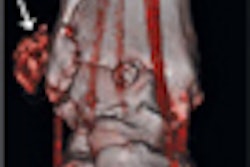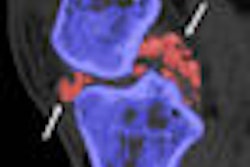Dual-source, dual-energy CT (DECT) is highly sensitive and specific for detecting gout, though it produces some false negatives, according to a study presented on Monday at the American College of Rheumatology's annual scientific meeting in Chicago.
Dr. Tim Bongartz and colleagues from the Mayo Clinic in Rochester, MN, wanted to test DECT's accuracy for detecting gout using a scanning technique modified to detect intra- or periarticular monosodium urate (MSU) deposits.
The established diagnostic approach using polarizing microscopy of synovial fluid is cumbersome and not always accurate.
"We wanted to really challenge the new method by including patients who were only a few days into their first flare of gout," Bongartz said in a statement accompanying the release.
Eighty participants (half with confirmed gout; half without gout who underwent the standard test for other reasons) underwent dual-source DECT (80 and 140 kVp) scanning of the aspirated joint (Somatom, Siemens Healthcare), and the images were classified by a musculoskeletal radiologist as positive or negative for MSU deposition.
The sensitivity and specificity of DECT for diagnosing gout was 93% and 95%, respectively. There were three false-negative results, all in patients without a history of gout who were experiencing their first flare-ups.
DECT is expected to be most helpful when joint synovial fluid cannot be obtained or the fluid analysis is negative even when gout is strongly suspected, according to the researchers.




















